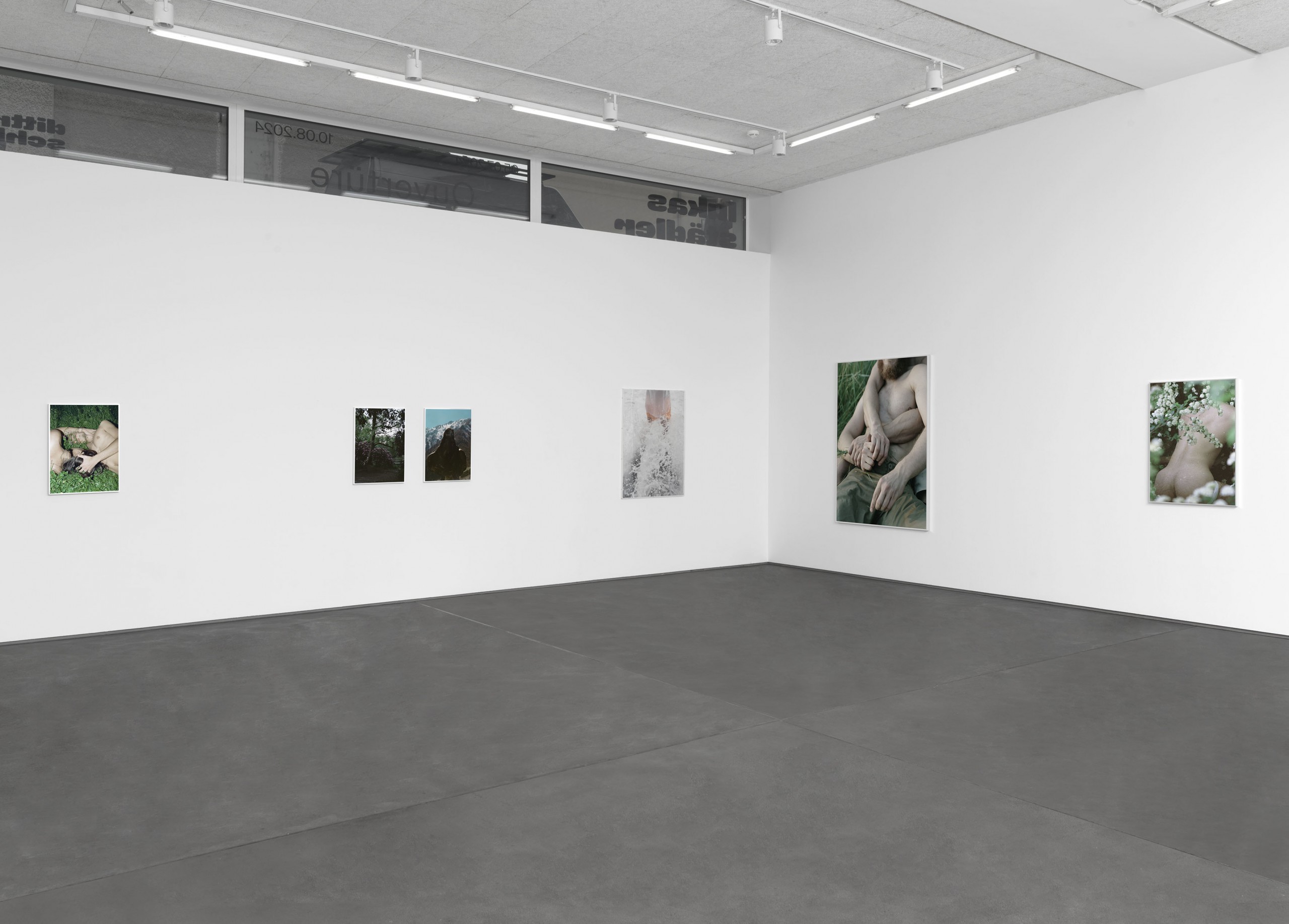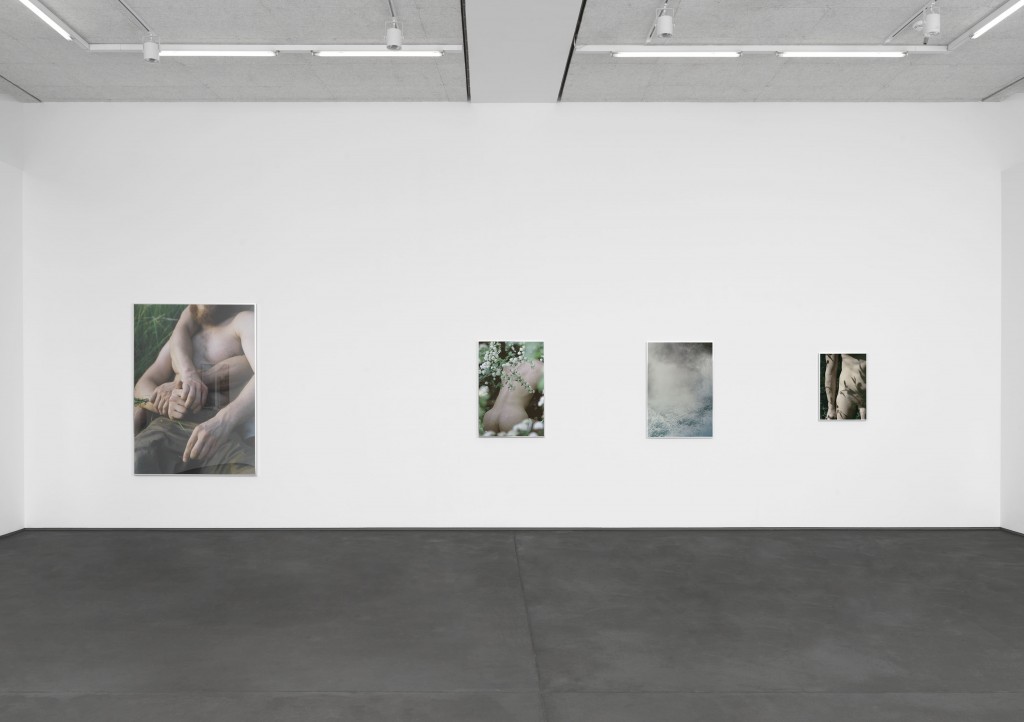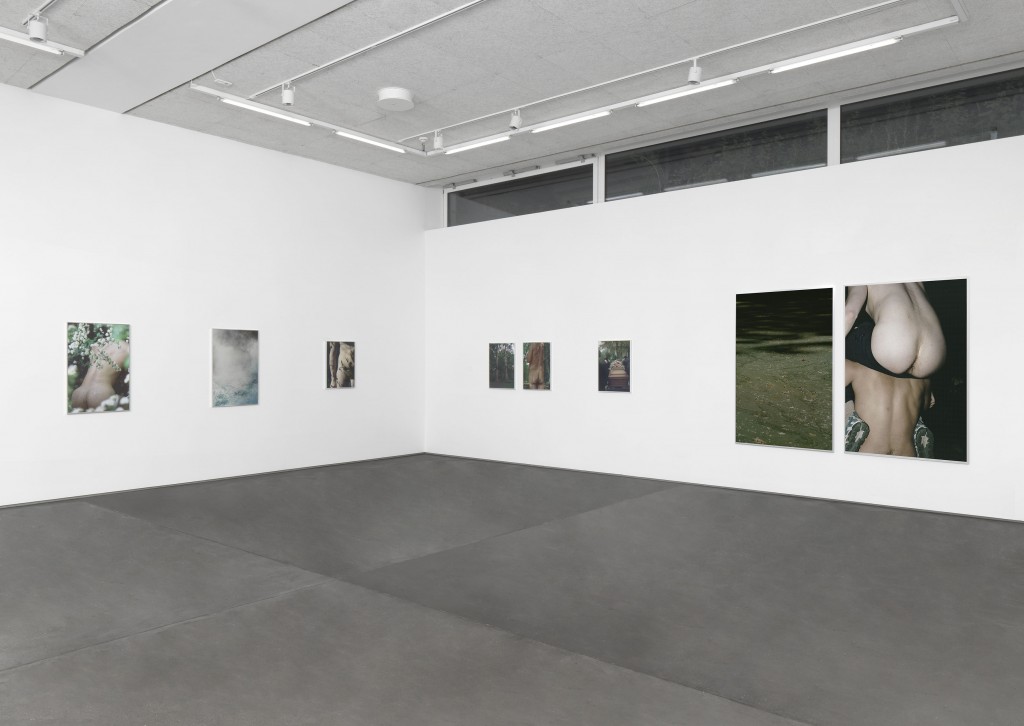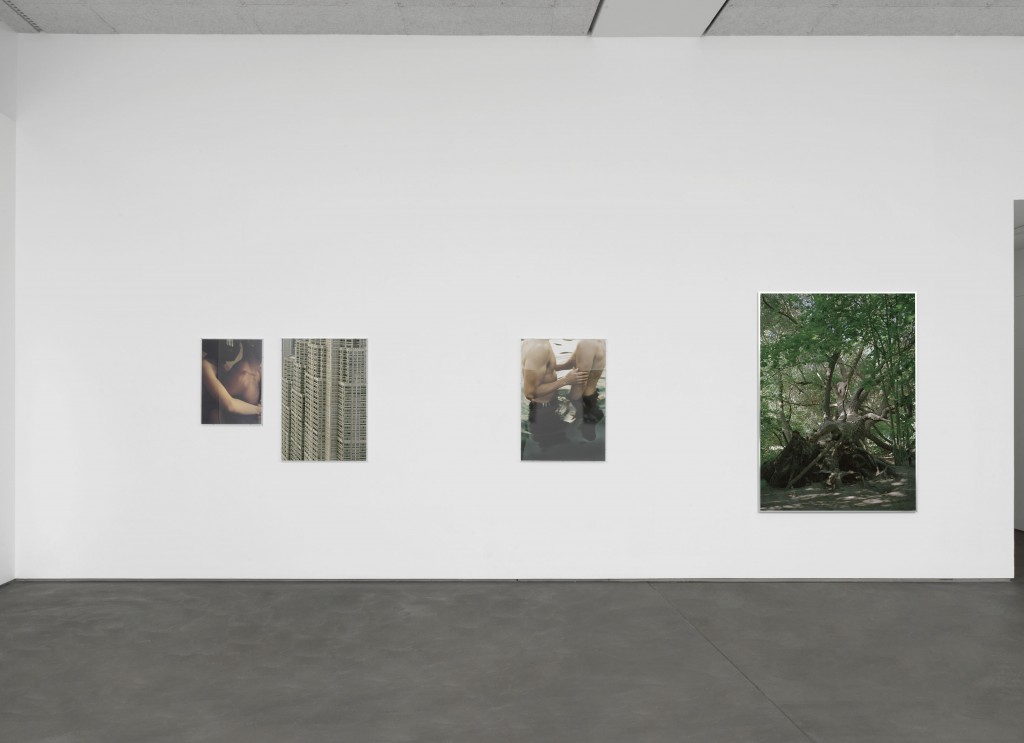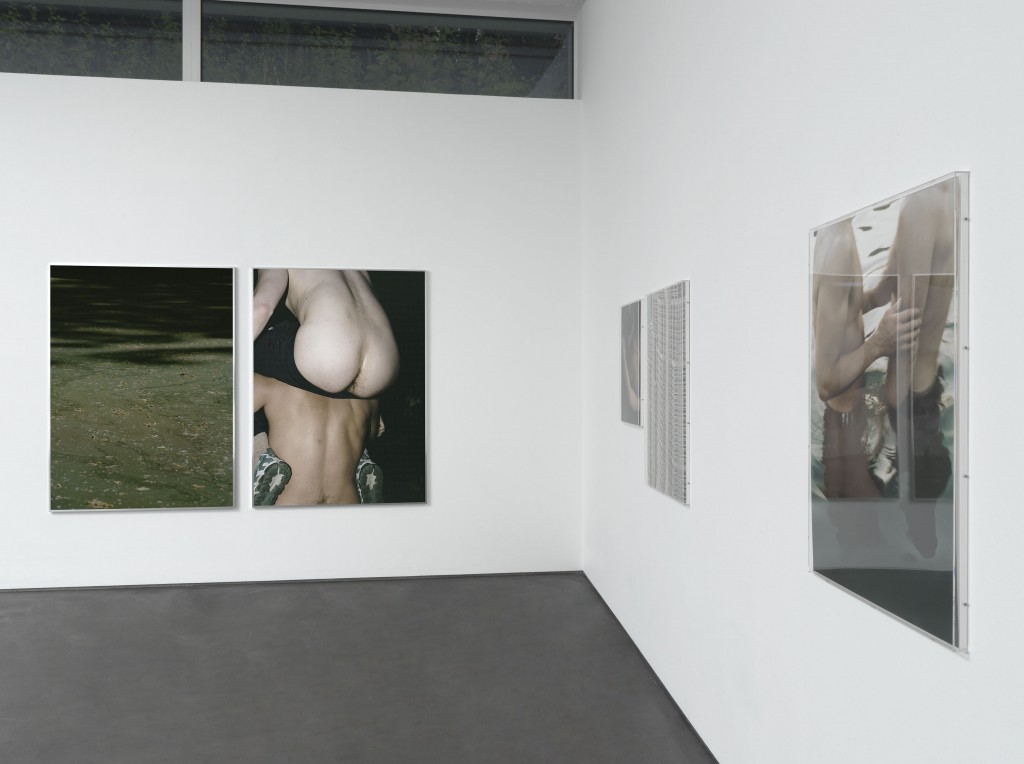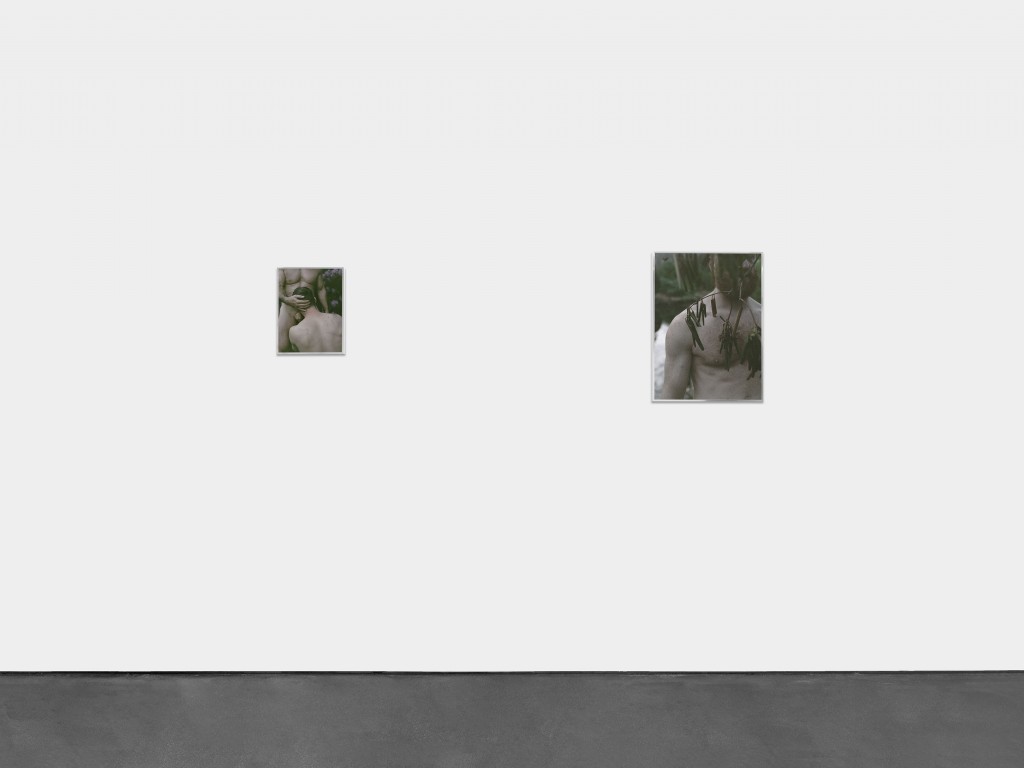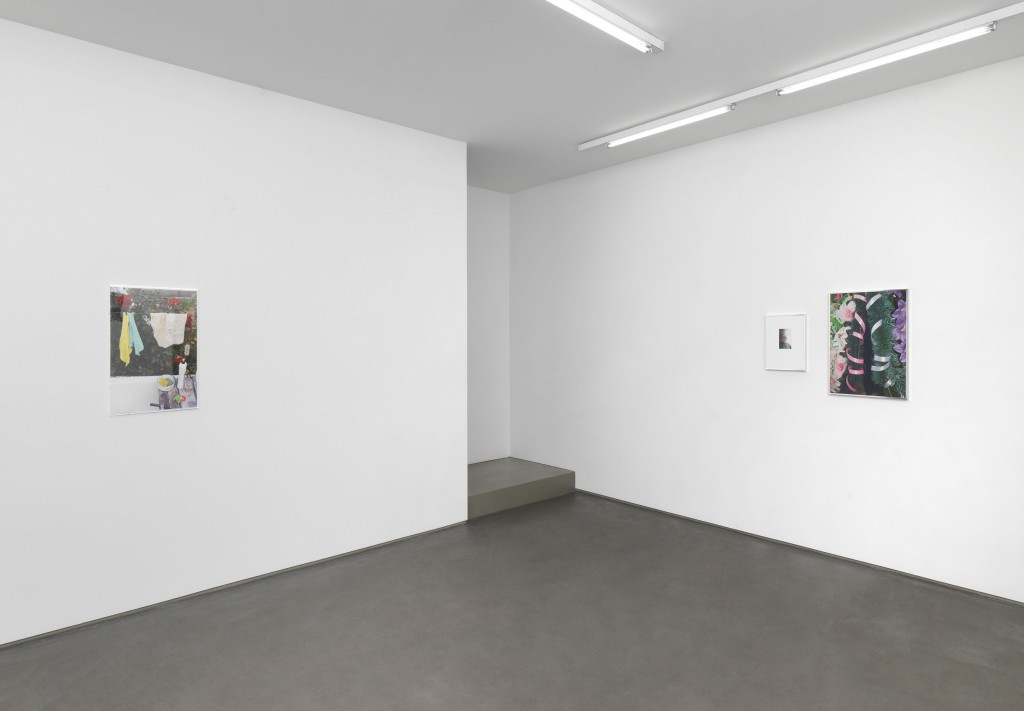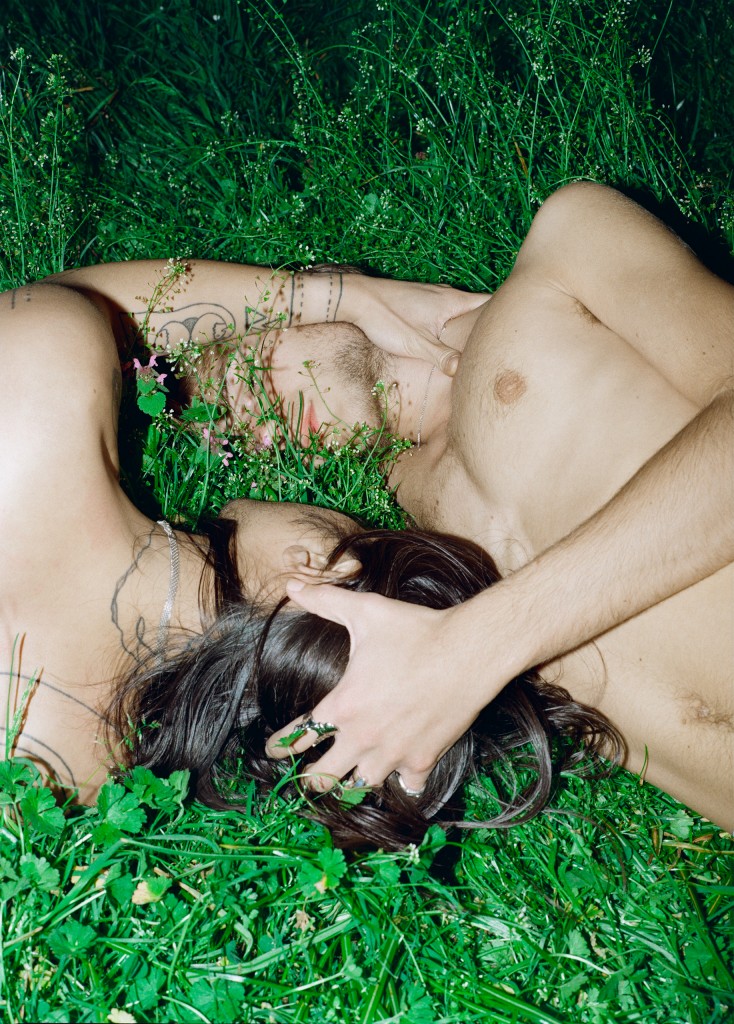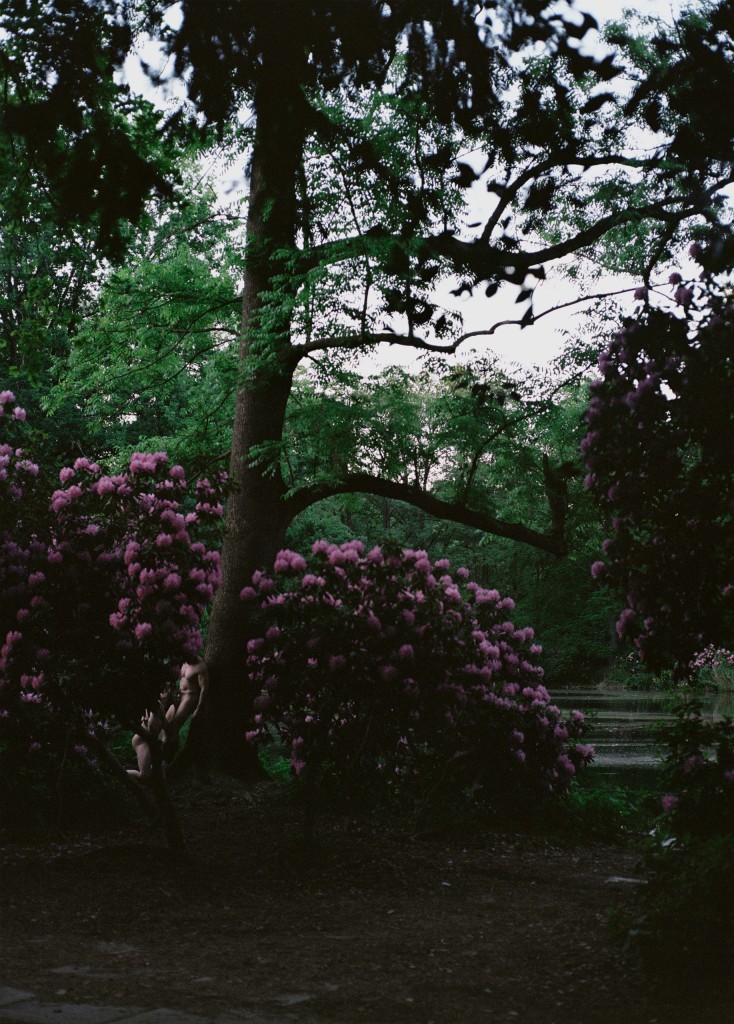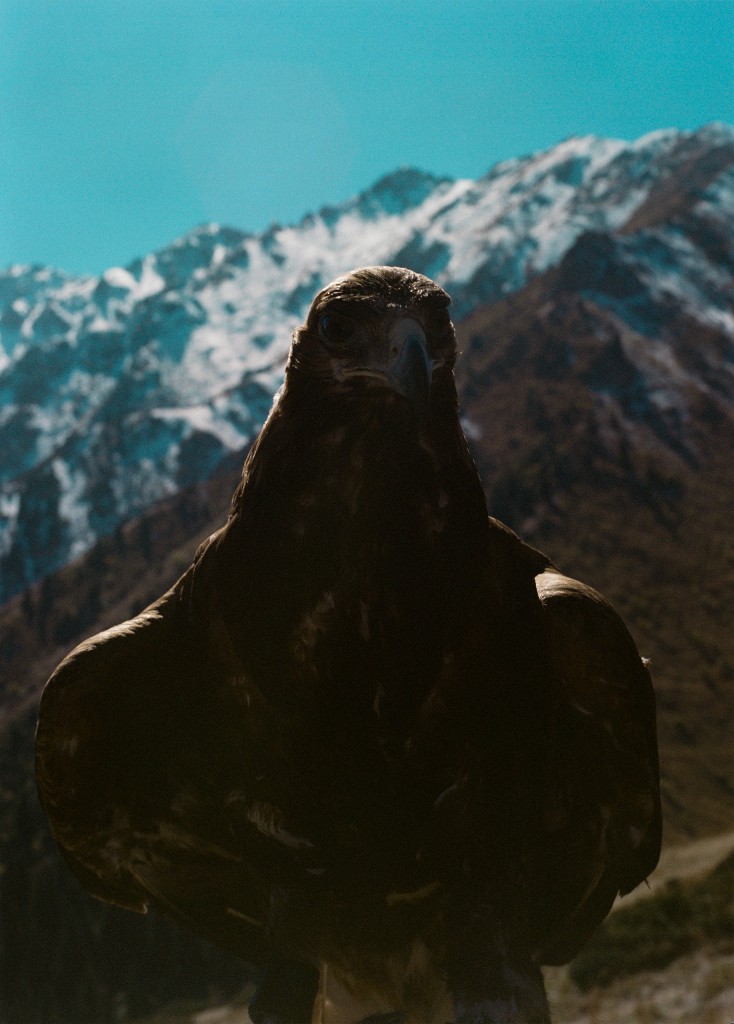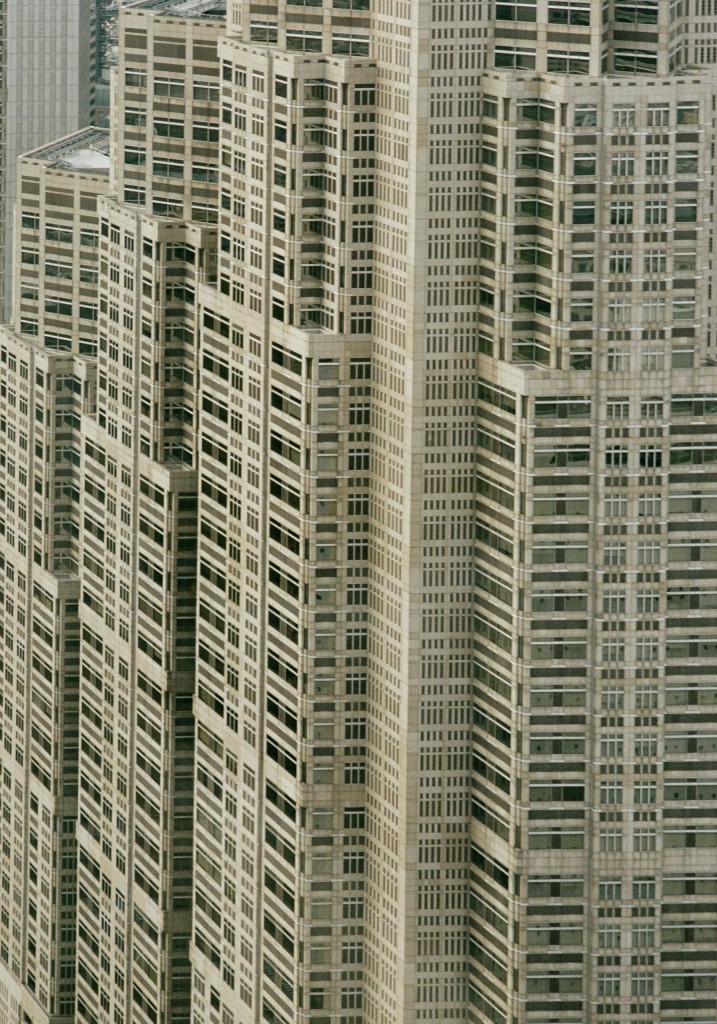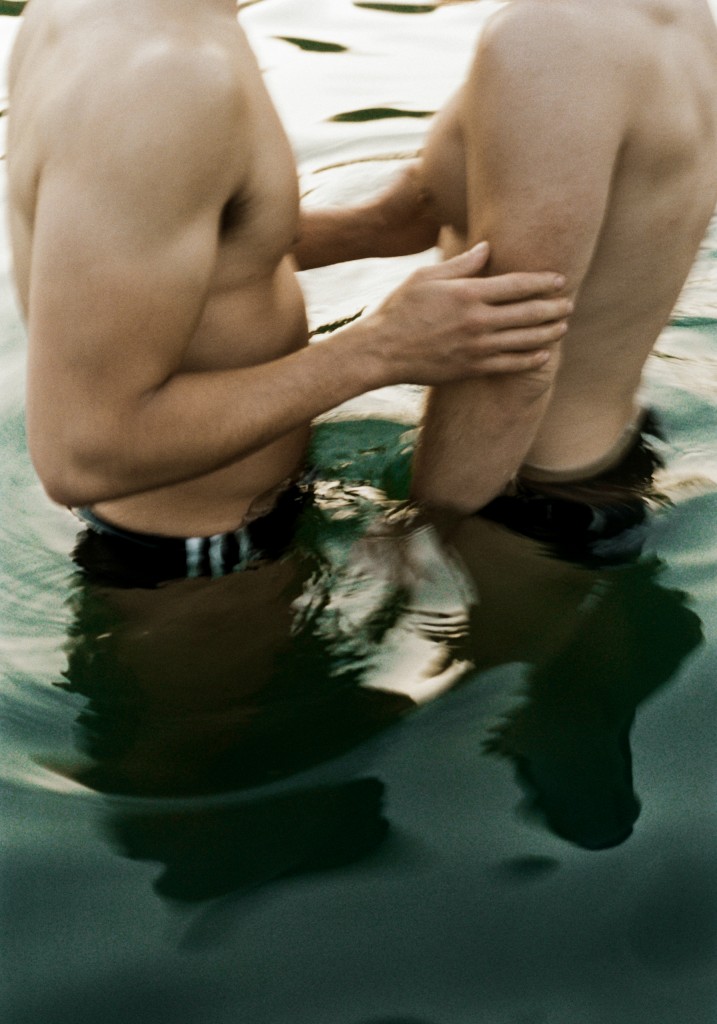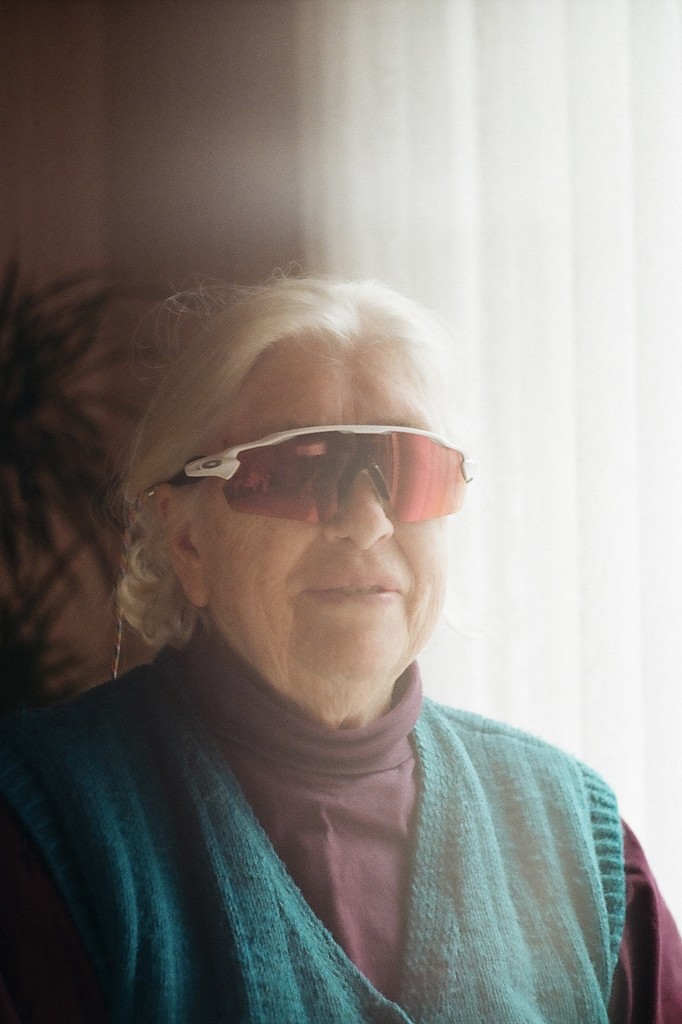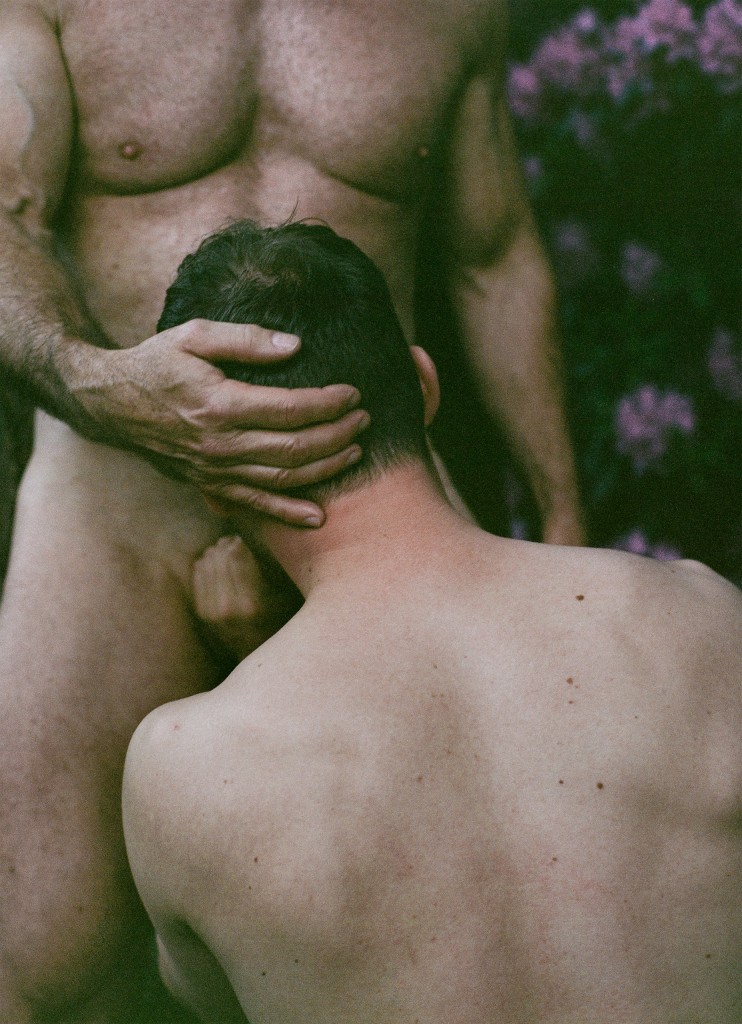DITTRICH & SCHLECHTRIEM proudly present our first solo show by artist-photographer Lukas Städler. The debut exhibition, titled Ouvertüre, opens on Friday, July 5, 2024, 5–9 PM and will be on view through August 10, 2024. The works shown in Ouvertüre create optimistic spaces for reflection on intimacy, community, and identity and features new works alongside a more autobiographical overview, offering an introduction and penetrating insight into Städler’s recent history and artistic evolution.
Städler’s artistic practice centers on personal and often intimate explorations of the world around him. Blending staging with spontaneous captures, his photographs offer a personal approach to documenting individual realities of life. His connection with his subjects—people from his community—allows him to convey how they love and live through his lens. The exhibition also includes images from Städler’s ongoing project Hain, for which he spent two years documenting Berlin’s cruising spots. The almost pastoral photographs capture the tension and spontaneous energy of these sexual encounters.
Epilogue for Overture
You’ve just seen the central part, because the central part, that was you, and you’re holding the epilogue in your hands.
You were able to see for yourself, you’ve strolled through three acts and mused.
How many dramas might be taking place here, which stories are being told, a moment of silence, intimacy amid the howl of the metropolis, a fairy tale by the pond, or an elsewhere insight?
The Overture is meant for arrival before things get started in earnest, for understanding the setting, the protagonists of a spectacle, the dramatic potential, the pathos of a wordless moment, and the expectation of an afterwards.
We will begin in a moment, but we are still in the Overture, we recognize the surroundings, the props that have not yet been put into play, but things might get started in a moment.
The above is an excerpt from an essay on the exhibition by Jan Koslowski that will be published on our website prior to the opening. For further information on the artist and the works or to request images, please contact Owen Clements at owen(at)dittrich-schlechtriem.com.
+
The opening evening on Friday, July 5, includes a performance by Franka Marlene Foth, titled L’enfant rebelle at 7:30 PM.
Franka Marlene Foth is a Berlin-born, multihyphenate creative. Her work as a choreographer, performance curator, and director, centers on the intricate artistry of dance and performance, aiming to shift perceptions of movement into poetic narratives. As the founder of the FMKF artist collective, she initiates cultural and social dialogues through redefined contexts that engage the senses. Her projects are known for their high auditory and visual impact, blending multiple artistic disciplines to challenge contemporary art codes.
Join us for food, drinks, and dancing. DJ set by FLOWWW / Florian Winges until 9 PM. The event continues with an afterparty co-hosted with KW Institute for Contemporary Art at Marmorbar from midnight to 7 AM, featuring DJs Westfa, NAS TEA, Dede, and Riotbutt.
DITTRICH & SCHLECHTRIEM freuen sich, die erste Einzelausstellung des Fotokünstlers Lukas Städler in der Galerie vorzustellen. Sein Debüt unter dem Titel Ouvertüre eröffnet am Freitag, 5. Juli 2024, von 17 bis 21 Uhr und ist bis zum 10. August 2024 zu sehen. Die in Ouvertüre gezeigten Arbeiten schaffen optimistische Räume für Reflexionen über Intimität, Gemeinschaft und Identität und umfassen neue Arbeiten neben einem autobiografisch geprägten Überblick, um so eine Einführung und tiefe Einblicke in Städlers jüngere Vergangenheit und künstlerische Entwicklung zu bieten.
Im Zentrum von Städlers künstlerischer Praxis stehen persönliche und oft intime Erkundungen seiner Umwelt. In einer Verbindung von Inszenierung und Spontaneität entwerfen seine Bilder eine eigene Herangehensweise an das Dokumentieren individueller Lebenswirklichkeiten. Seine Modelle kommen aus den Communities, in denen er sich bewegt, eine Nähe, die es ihm ermöglicht, zu vermitteln, wie sie lieben und leben. In der Ausstellung sind auch Bilder aus Städlers Projekt Hain zu sehen, für das er seit zwei Jahren Cruising-Spots in Berlin in beinahe idyllischen Fotos dokumentiert, die die Spannung und spontane Energie dieser sexuellen Bewegungen einfangen.
Epilog für Ouvertüre
Den Mittelteil haben Sie gerade gesehen, denn der Mittelteil, das waren Sie, und den Epilog halten Sie in den Händen.
Ein Bild konnten Sie sich machen, drei Akte sind Sie geschlendert und haben sinniert.
Wie viele Dramen könnten hier stattfinden, welche Geschichten werden hier erzählt, ein Moment der Stille, Intimität im Geheul der Großstadt, ein Märchen am Tümpel, oder ein Woanders erkennen?
Die Ouvertüre ist zum Ankommen da, bevor es richtig losgeht, das Setting verstehen, die Protagonist*innen eines Schauspiels, das dramatische Potenzial, das Pathos eines wortlosen Moments und die Erwartungshaltung eines Danach.
Gleich geht es los, aber wir sind noch in der Ouvertüre, wir erkennen die Umgebung, die Requisiten, welche noch nicht bespielt wurden, aber gleich könnte es losgehen.
Dieser Auszug stammt aus einem Essay zur Ausstellung von Jan Koslowski, der zur Eröffnung auf unserer Webseite erscheinen wird. Für weitere Informationen zum Künstler und den Arbeiten oder um Bildmaterial zu erfragen, wenden Sie sich bitte an Owen Clements, owen(at)dittrich-schlechtriem.com.
+
Im Rahmen der Eröffnung am 5. Juli findet um 19:30 Uhr eine Performance von Franka Marlene Foth mit dem Titel L’enfant rebelle statt.
Franka Marlene Foth ist eine in Berlin geborene multidisziplinäre Kunstschaffende. Im Mittelpunkt ihrer Arbeit als Choreografin, Performancekuratorin und Regisseurin steht die komplexe Kunst von Tanz und Performance, in der Wahrnehmungen von Bewegung in poetische Erzählformen übergehen sollen. Als Gründerin des Künstler*innenkollektivs FMKF initiiert sie kulturelle und gesellschaftliche Dialoge durch neu definierte Kontexte, die die Sinne ansprechen. Ihre Projekte sind für ihre große akustische und visuelle Wucht bekannt und verbinden diverse künstlerische Disziplinen, um Zuschreibungen in der heutigen Kunstwelt in Frage zu stellen.
Essen, trinken und tanzen Sie mit uns. DJ-Set von FLOWWW / Florian Winges bis 21 Uhr. Danach geht es weiter zu einer gemeinsam mit dem KW Institute for Contemporary Art veranstalteten Afterparty in der Marmorbar von Mitternacht bis 7 Uhr mit DJs Westfa, NAS TEA, Dede und Riotbutt.
